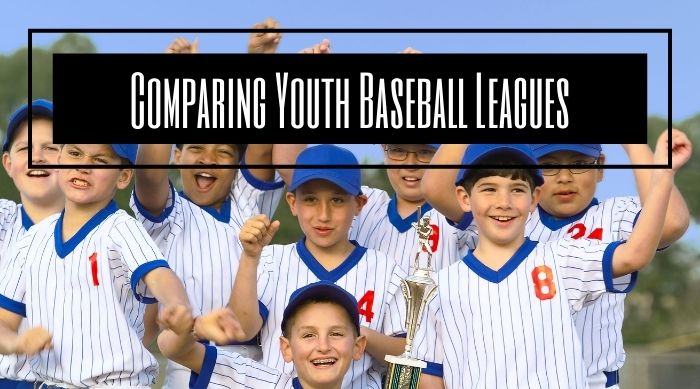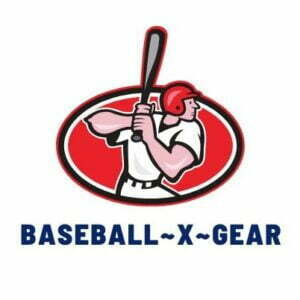There are so many youth baseball leagues available for players all across the country. Sometimes it’s simple to select the closest league for a first-timer, but that might not be the smartest move. Choosing the right league is vital for a player’s success. I’m not talking about success in the professional realm; I’m talking about success during the season.
What Are My Options?
There are many options out there and many factors to think about, too. Some organizations are more aggressive than others, but it’s hard to say they all operate the same way because it comes down to coaches and teammates. Just because I thought PONY baseball was aggressive when I was 12 doesn’t mean your local chapter will be aggressive.
But let’s talk about what’s out there, what a baseball player can expect, and what leagues sound attractive to both the player and the parent or guardian.
- Little League
- PONY League
- USSSA Baseball League
- American Amateur Baseball Congress (AABC)
- Cal Ripken/Babe Ruth
- Dixie League
These leagues stretch across the United States of America, some in Puerto Rico and Canada. I’ve organized this list based on easy access to limited access. The further down the list, the harder it might be for someone to find a local team or more challenging for the player. It’s all your choice. My goal is to make sure you have the intel before signing your player up for their next baseball season.
Little League
Over 90 countries in the world have a Little League in their city or town. With 75 years of experience, over two million players–yes, that number is correct–the group knows how to run a successful program. Plus, and this is a huge one for the players who dream of seeing themselves on ESPN, all major division World Series games are on TV. Will all kids make it to the World Series? No. But the idea is exciting.
Because Little League has a long successful history, it’s a safe league that will provide what it promises. It welcomes all players aged 4-16 with different experiences and is a great starting point for all players. I played for Little League for six years and coached it many more years, so believe me, it’s a great league.
Rules are standard to baseball rules and regulations; however, the field size differs from others. You’ll see the other measurements below, but in Little League, the pitching distance is 46 feet, and the bases are 60 feet, which means this is the shortest distance, and this league might be the safest place for a newcomer to start. Some little leagues run the five to seven innings rules, while others watch the time; all I can say is that it’s up to your local chapter. If and when your team makes it to the playoffs or World Series of Little League, innings will come into effect, not time.
PONY
Protect our Nations Youth, or PONY, has a legacy that dates back to the 1950s. Like most baseball leagues, there are not a lot of differences in rules, team sizes, and even a chance to play in the World Series. I don’t want to say anything negative about the Little League organization, but the league has one major issue PONY caters to: age limits.
While Little League’s age range is 4-16, PONY’s age group runs from 4-23. That might not seem important, but I’ve known so many men and women who want to play competitive ball even though they’re out of high school and can’t commit to the time needed for college. And, of course, some folks aren’t good enough to play in college or AAA or professionally. Thanks to PONY, adults don’t have to call it because they aged out.
I played PONY for three years. I remember the league was more aggressive, the players were stronger, and the coaches had real passion. I loved all my years in Little League, but I really loved PONY because it challenged me. The pitches came faster, the hits flew further, and the competition was high. If you’re lucky, your baseballer will play Little League for a couple of years, and once he ages out, he can play PONY with all his skills. I took this road, and it was so much fun.
American Amateur Baseball Congress (AABC)
The league prides itself on its 86-year legacy that has provided baseball for people aged eight to college level. Since 1935, the organization has expanded from ten states to 42 states, Puerto Rico and Canada. Fun fact: the league names their age groups after pro players like Roberto Clemente, Willie Mays, and Sandy Koufax, to name a few.
What’s the big difference? The rules. The AABC believes in local autonomy, which says each organization or group is allowed to set its own rules. That includes the number of batters, time limits, and inning limits. Those rules only apply to the regular season. When the post-season comes around, all leagues must conform to the national regulations, which are standard baseball rules. And that’s it.
There wasn’t an AABC organization near me when I was going up. And based on their track record, I wish there was because this league has a history of pumping out some superstars. Dusty Baker, manager of the Houston Astros, played for the AABC; Hall of Famer Wade Boggs, Ken Griffey Jr, Derek Jeter, and Randy Johnson all played for the AABC. Check out aabc.us/alumni for a complete list of pro ballplayers and a list of local chapters looking for ballplayers.
Cal Ripkin/Babe Ruth
Here is another excellent organization with a long history (1951), dedication to the sport, and an extensive age range that kids can still play if they want more time on the field after their high school season ends. Both the Cal Ripkin League (CRL) and Babe Ruth League (AKA the Bambino League) operate in unison, but at the same time, they’re different. CRL offers baseball for kids 4-12; the Bambino league starts at 13 and runs up to 18. The group has recreation teams that run in the spring and a travel team that starts in the fall. Your player could be on the field from September to May if you plan out your time.
As for the locations, the league is nationwide, and they ask that all applications come through their website (baberuthleague.org). I don’t know anyone who has played for either organization, but according to many message boards, I wish I had because this league is for “real ballplayers.”
What’s the difference? I have an easy answer: The pitching distance is 50 feet, and the bases are 70 feet apart. Compare that to Major League Baseball, which pitches at 60 feet, six inches and runs 90 feet between bases.
And in case you were wondering, Cal Ripkin/Babe Ruth have a World Series.
American Legion Baseball
Founded in 1925, the league offers baseball for players aged 13-19 years old to play in the US and Canada with standard baseball rules. The organization’s sign-up operates more like a travel ball team, but let me walk you through what I know. If you check out legion.org, and you have to, you’ll find how many groups are in each state. There are two teams in Arkansas, three in Georgia, and 128 in Massachusetts. So if you’re interested, you might have to work to get on a team. The American Legion suggests that all potential players check out their local post and inquire about the local baseball leagues.
If you can’t find an open spot, the American Legion allows new teams to register with a simple application on their website. The answer is yes for those wondering if this league operates as a travel ball team. But it might be worth it.
The organization’s professional history speaks for itself: Hank Allen, Lawrence “Yogi” Berra, Barry Bonds, and David Eckstein. Check out the American Legion baseball alumni page for the complete list of their proud players.
Dixie Youth Baseball
Dixie Youth baseball offers baseball for kids 4-19, but there’s a catch: you have to live in the south to play. The eleven states in which the league operates offer similar rules and regulations as the Little League.
Other than the locations, what’s the difference? Let me answer that by talking about pitching mounds and baseball fields because distance matters. Depending on the player’s age group, the pitching mounds run from 46 feet to 50 feet. Baselines run 57 feet in length. Remember, most of these leagues followed the Little League format at one point. They all added extra distance for those players who are stronger, more dedicated and have more aptitude for running and throwing a similar distance as a professional ballplayer.
The league offers online registration on youth.dixie.org.
USSSA
The United States Specialty Sports Association is another wonderful baseball organization supporting players aged three to 14. This is another highly competitive league, but this league supports national tournament play, unlike the others. Gameplay is a little confusing because players can be registered to play certain games with the same team. In contrast, players in different regions can play, even if they’ve never played with the team or even met the team. Confused? It’s okay, I am too. There are recreational leagues, too, with top competitive leagues in the country and a middle-class club for those who are competitive but not at the national range.
Those who want to sign up for USSSA need to ask their local chapter if it is a rec league or national league. If you want the challenge and are comfortable with the travel, sign up for a club that challenges your player. The website usssabaseball.org is not the most straightforward website to navigate, but there are details on their world series, how to register as a manager, and the other sports the league offers.
How to Choose
Even though baseball rules are the same, teams, coaches, and locations are not. I think parents and guardians need to decide if they are willing to travel every weekend, sometimes every few days, for practice. Then, decide which league is suitable for the player. You don’t want to sign your little leaguer up for a team when he can’t get to practice and the games. If your child wants to play on a travel ball team but you don’t want to travel, reach out to the groups and see if there is a carpool or other forms of transportation. Don’t feel guilty about asking; I’ve seen parents agree to drive the team one week and another parent drives the following week.
Prices
I didn’t mention prices because they’re not consistent anywhere. I’ve seen Little League charge $40 bucks in one town and $250 in another. I can tell you the cheap route versus the expensive course. The most affordable way is a recreation league with a field or location. Your team will play consistently because the association has negotiated with the city or town on the lights and field rentals, helping keep the cost down. Travel ball, typically, is the most expensive. You have to pay to sign up, but naturally, you have to pay tournament fees on the weekend, and I’ve seen those fees from $20 to $200. It can get pricey.
Conclusion
As you can see, there are several options available to you when it comes to youth baseball leagues. Hopefully our overviews will help you locate a club near you and identify which league is best suited to your needs and interests.
Related Articles
RE Schmidt is a Southern California baseball player, enthusiast, and coach. With over 15 years of experience playing little league to college, he’s had his ups and downs on the field. Currently, he spends his time coaching baseball, watching baseball, and teaching English.

